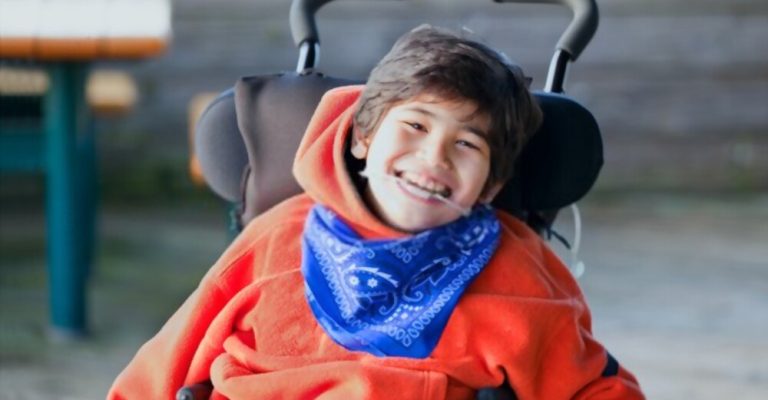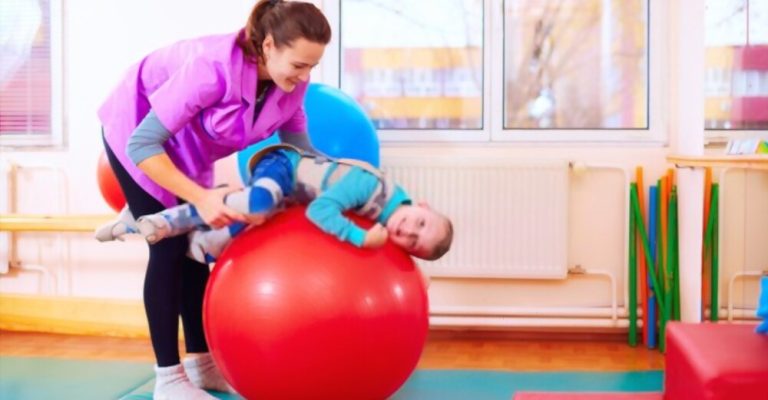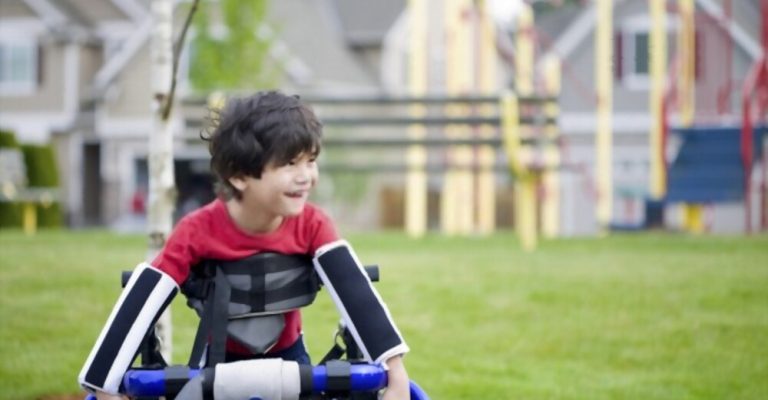
Living with cerebral palsy can pose a number of challenges, one of the most significant being balanced. Staying upright and moving without fear of toppling over requires an individual’s core muscles to be strong. This article will discuss why it is essential for individuals with cerebral palsy to perform core exercises to improve their balance and, ultimately, their quality of life.
First, we will look at common misconceptions associated with this type of exercise before exploring examples tailored toward potential CP sufferers and different techniques that can ensure abdominal muscle groups are strengthened safely and effectively.

Core stability exercises can help strengthen the muscles that contribute to better posture, balance, and coordination. A strong core helps keep the spine aligned and reduces the risk of back pain or injury from falls. Additionally, core strength helps maintain good balance when standing or walking, which can be beneficial for elderly individuals who are at higher risk for falls.
Strengthening your core increases flexibility in your hips and shoulders, allowing you to move more freely throughout daily activities. This can also help improve sports performance by providing a larger range of motion while jumping, running, and turning.
A strong core is important for improved sports performance because it allows athletes to move their bodies more efficiently when participating in running, swimming, and biking activities. In addition, core stability exercises help an athlete’s body stay balanced while executing movements quickly and powerfully while also reducing the potential for injury due to muscle imbalances between the upper and lower body.
Core stability exercises help reduce the risk of injury by strengthening muscles that support joints throughout the body. By increasing muscle strength in your torso, you can reduce stress on areas like your shoulders, neck, and spine, as well as surrounding ligaments, tendons, and joints, which can benefit individuals with a history of injuries or who are prone to them during physical activity.
Strengthening your core muscles helps improve breathing mechanics, which is essential for optimal movement quality during sports performance and daily activities. In addition, strong abdominal muscles are associated with enhanced inhalation capacity, allowing oxygen to flow freely throughout your body while reducing fatigue during physical activity.

Strengthening the abdominal muscles, which support the spine, might aid one’s sense of balance. This post presents 6 exercises to help people with cerebral palsy improve their balance.
Well, so let’s begin!
Don’t panic; just take a few deep breaths. Did you feel yourself tensing up in the middle, expanding your chest, and straightening your back? The diaphragm descends during inspiration, allowing the lungs to expand and take in more air. As you take a few deep breaths, you activate your core muscles and improve your posture, both of which contribute to greater trunk stability.
As an added bonus, deep breathing is a technique that may be used whenever it’s convenient. There’s no special gear required, and you can do it anywhere. In addition, some creative thinking may turn any activity into a game for kids: Take deep, slow breaths via your nose as if you were sniffing flowers; release them slowly out your mouth as if you were blowing out flames.
The buoyancy of the water helps your kid feel weightless and removes a lot of strain from the joints, making it an excellent environment for practicing walking. Your kid may practice walking the right way and gain a feel for it this way.
To make your kid feel lighter, immerse them in water as far as you feel comfortable. For example, if your kid were to remain in a pool with water reaching just to their knees, the hydrostatic pressure would be greater than when the water reached only their abdomen.
Its resilience to density changes is another of water’s useful characteristics. In addition to reducing the force of a fall, this is the factor that makes rapid movement underwater so difficult. Likewise, resistance makes swimming and strolling in a pool an excellent technique to build strength in your arms and legs.
Swimming with a pool noodle under one’s seat is a terrific and entertaining technique for kids to practice equilibrium and core strength while enjoying themselves. Among the two possible positions for resting on the pool noodle, swinging on it and with it between one’s knees will probably be the simplest one to master.
People with cerebral palsy often enjoy riding horses as a fun and beneficial exercise. Hippotherapy has been around for a while and is a well-respected kind of treatment. Children with cerebral palsy will find this a delightful method to practice and improve their equilibrium.
Kids must keep adjusting where their weight is distributed on the horse, so they don’t fall off. When they do this repeatedly, they improve their ability to maintain their balance. They are so preoccupied with the horses that they do not notice how much their abdominal muscles work.
Planks are an effective exercise for people with cerebral palsy to improve core stability and balance. The plank simultaneously engages multiple muscle groups, strengthening the abdominal muscles, lower back, and spine. This can help improve balance, reduce the risk of falls, and better support the body during daily activities.
Planks also engage other muscle groups in the shoulders, hips, arms, and legs to help them become stronger, leading to improved posture. Additionally, by maintaining a plank position for an extended period, people with cerebral palsy can build up their endurance levels over time. This helps them to be able to participate in physical activities that may have been hard or impossible before.
Plank exercises also help improve coordination as it is necessary for both sides of the body to work together as you move into a plank position and then hold it steady. By regularly working on these exercises, people with cerebral palsy can substantially increase their strength and stability while decreasing their fatigue from doing everyday tasks like walking or carrying groceries.
Due to its emphasis on proprioceptive awareness (being aware of one’s own body and limb positions), bridging can support higher-level skills such as transferring from a seated position onto a standing surface. In addition to strengthening the back, hips, gluteal muscles, abdominal muscles, and spine, bridging can increase the range of motion in the hip joint and reduce pain in the back and hips.
Core stability is essential for maintaining a proper balance while standing or walking. Bridging exercises work to increase strength in all of these areas to help improve overall balance. Because of cerebral palsy, individuals affected may have difficulty with motor control and coordination; however, bridging exercises can help to re-train the body to move more efficiently by reinforcing proper muscle recruitment patterns.
These activities are also helpful for improving core organization—the ability to maintain postural alignment while engaging in movement tasks—a vital form of exercise.
Balance exercises performed on the gym ball further increase coordination and proprioception – an awareness of our body’s position in space. This improved body awareness helps individuals to adjust their posture better when changing direction or standing on one foot.
Gym ball exercises also help to improve motor planning and sequencing skills, as it requires the coordination of multiple muscle groups at once. In addition, many balance exercises can be adapted to accommodate different levels of severity in regard to strength, range of motion, and sensation.
The use of a gym ball also helps to increase flexibility in stiff muscles around the trunk (hips/abdominals), which can often lead to improved ease in transfers between surfaces. Additionally, because gym balls are inexpensive and lightweight, they make it easy for clinicians or caregivers to bring them into any home or exercise environment without the hassle or extra cost.
Crab walking can help people with cerebral palsy gain better coordination and movement and improve coordination between the arms and legs. Crab walking also helps promote a healthy level of balance by engaging the hip flexors and strengthening the hip abductors. It also strengthens the neck muscles, which are essential for maintaining balance.
This form of exercise is especially beneficial for children with CP, as it encourages them to use their body weight in different ways to maintain their balance, which can have long-term positive effects on their overall motor control.
Furthermore, crab walking helps hone fine motor skills by improving hand-eye coordination, spatial awareness, and proprioception (the sense of where one’s own body parts are in space without looking).
Lastly, this exercise can help increase heart rate while still having a low impact on joints. All these benefits make crab walking a great activity for those living with cerebral palsy, as it helps promote good posture and balance while giving them an enjoyable way to stay fit and healthy!
Young children’s mobility, security, and autonomy benefit significantly from developing their balance abilities. Unfortunately, the difficulty of maintaining balance often increases as people with cerebral palsy age since they tend to gain weight. This is why it’s so important to start balancing exercises at a young age to avoid issues later on.
Reference:
https://www.ncbi.nlm.nih.gov/pmc/articles/PMC3836527/
https://www.ncbi.nlm.nih.gov/books/NBK557555/
https://www.betterhealth.vic.gov.au/health/healthyliving/resistance-training-health-benefits
https://www.ncbi.nlm.nih.gov/pmc/articles/PMC6047969/
https://www.aacpdm.org/UserFiles/file/fact-sheet-fitness-083115.pdf